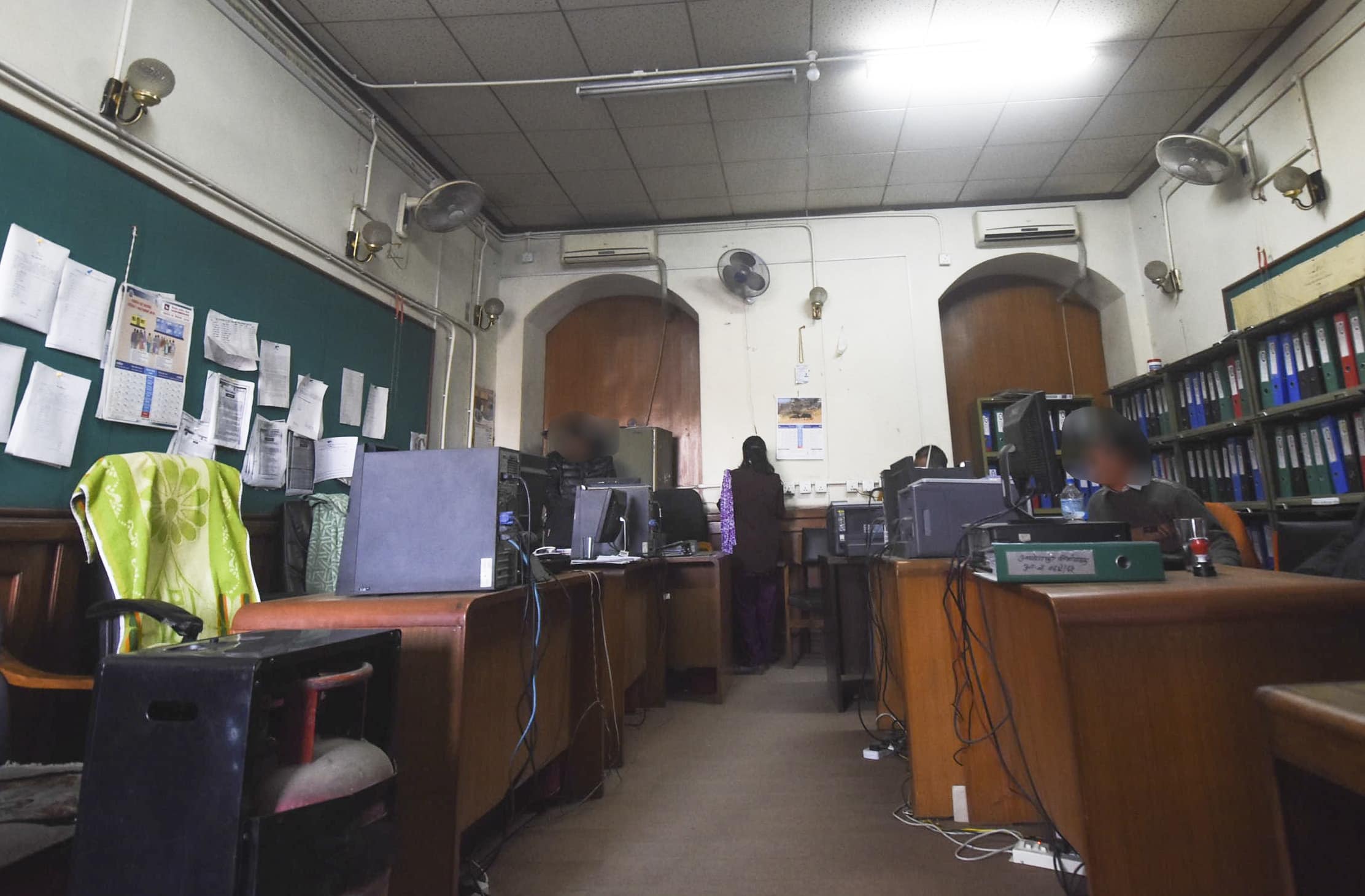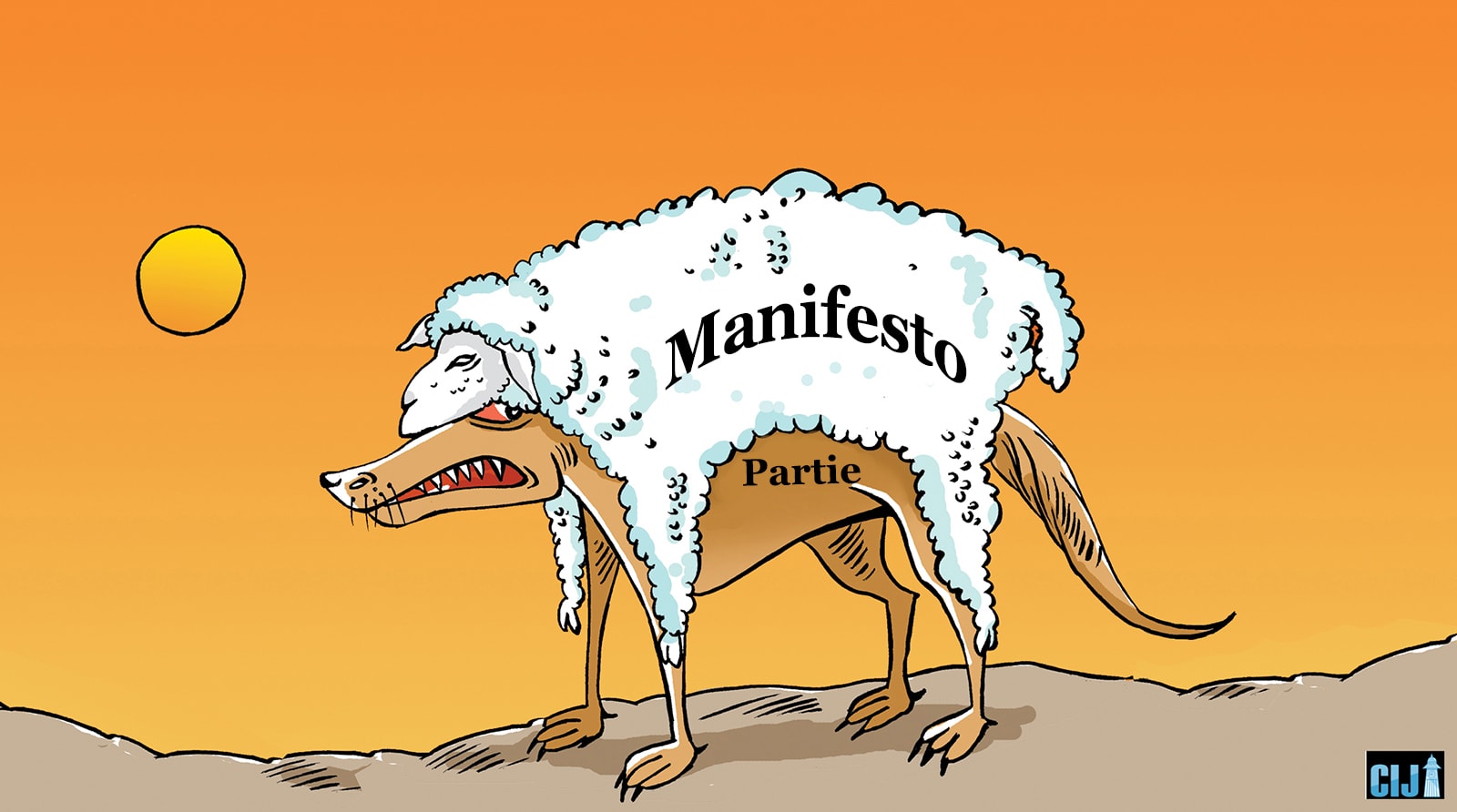Not even half of the ward offices of country’s metropolitan cities, sub-metropolitan cities, municipalities and rural municipalities have their chiefs. The conditions of ward offices are even worse. Among the 6,743 ward offices across the country, around 5,000 do not have their secretaries.
– Pramod Acharya: Centre for Investigative Journalism-Nepal
The metropolitan cities, sub-metropolitan cities, municipalities and rural municipalities–local federal units numbering 753 in total–are running nominal offices across the country. While a joint-secretary has to be the chief executive officer at a metropolis, under-secretaries have been deputed to undertake the responsibilities. Among the 276 municipalities, only 187 have under-secretaries as their heads. Seventeen municipalities have no executive officers at all and 72 are under the care of section officers. The “Order on Local Level Administrative Organisation and Staff Management-2074” provisions an under-secretary level executive officer for a municipality.
Number of ward offices with no secretaries (District wise)
Among the 460 rural municipalities, 53 have nayab subbas (non-gazetted first class officers) as their deputy chiefs while the rest have section officers taking up their overall responsibilities. According to the government’s standard, some rural municipalities need under-secretary level officer as their executive chief.
As of December last week, as many as 3,058 wards of the local government units, among the 6,743 in total, are without their secretaries. Even among those in charge, many are non-government organisation officials. After a large number of wards were left without their secretaries, the government had deputed social mobilisers appointed by the Local Development Ministry eight years ago for the Local Governance and Community Development Programme. The tenure of these officials serving in the capacity of secretaries ends on December 31.
This way, nearly 5,000 ward offices are without secretaries. Important bases of the local governments, the ward offices have been almost defunct. As a result, common people in rural areas have not realised the existence of the local governments established following the local level elections in May, June and September under the new federal set-up.
‘Retirement if no deputation’
Some of the officials deputed by the government to the local level have defied the decision; a few of them have “disappeared from the way”. Some district offices said to have been transferred under the charge of local level have flouted the order. They continue to function in their traditional status, causing a turf war between the local federal unit and the sectoral offices. The staff crunch and the delay in sectoral office realignment have hit service seekers hard.
After the services from local level were halted in the absence of staffers, the General Administration Ministry in August directed officials to join their assigned offices within three days. Until now, more than half of the officials have not followed the directive, according to Shivaram Neupane, spokesperson for the ministry. “More than 10,000 officials have been deputed to the local level. But only 5,000 have taken up their assignment.”
Civil servants are reluctant to go to the local level, under-secretaries and joint-secretaries more so. Under-secretary Baburam Khanal is an example. Officials prefer Kathmandu as their duty station, said Khanal, because “there’s no clear career path” in provincial service. He argues that it is natural for a government employee to pursue career growth and facilities.
Local governance expert Krishna Prasad Sapkota views this non-cooperation as a ploy to make the local level unsuccessful. “Officials can no longer reap benefits from the local bodies,” said Sapkota. “So they are finding ways to make the local level a failure.”
Sapkota argues that government employees have no control over state funds as in the old structure. They were bent on weakening the local level since they find it hard to engage in their private businesses and enterprises at the same time. “This defiance is motivated by the design of not serving in the local governments and ultimately weakening federalism on the pretext of dysfunctional local level,” said Sapkota.
“With some exceptions, government officials have gained notoriety for not providing services to the people effectively, enjoying pay and perks by just signing their attendance, spending time on [fruitless] meetings and seminars, running private businesses and operating consultancies,” said local affairs expert Shyam Bhurtel. “In the local bodies which had been without people’s representatives for one and a half decades, civil servants used resources as they pleased with the feeling of ‘I’m the government’. They now must have felt it difficult to work under the representatives of local governments.”
A look at the division of responsibilities between the Centre, provinces and the local level shows that the largest number of staffers are necessary at the grassroots level. According to a report of the Local Level Restructuring Commission, 40 staffers are required at a local unit on an average. “This is a preliminary estimate. The ministry estimates that the local governments may require about 50,000 officials in total,” said Purushottam Nepal, joint-secretary at the Federal Affairs Ministry.
The Civil Servants Adjustment Act-2017 requires the officials deputed to the respective federation, provinces and local level to join their new offices within 35 days other than the travel time. Those failing to take up their new assignments will be “retired” after inquiry. Ministry spokesperson Neupane is determined to send “defiant” officials to the local level. “An official sworn in to serve the country cannot say s/he will not go to rural areas for service,” said Neupane, warning that they would tolerate no excuse.
Row over seniority
Another hurdle to deployment of officials is the row over seniority. The Order on Local Level Administrative Organisation and Staff Management-2017 says that the executive officer at the local level has to come from the administrative group.
 This provision bars appointment of officials from the so-called special groups “Education, Health and Forestry” as the executive chief. This has created a precarious situation in many offices of officials having to work under their juniors from the administrative service. Januka Subedi, assistant spokesperson for the Federal Affairs Ministry, says, “I’ve heard senior officials expressing their ire that they were required to work under a metropolis executive, who is a joint-secretary from the administrative service.”
This provision bars appointment of officials from the so-called special groups “Education, Health and Forestry” as the executive chief. This has created a precarious situation in many offices of officials having to work under their juniors from the administrative service. Januka Subedi, assistant spokesperson for the Federal Affairs Ministry, says, “I’ve heard senior officials expressing their ire that they were required to work under a metropolis executive, who is a joint-secretary from the administrative service.”
Under-secretary Yubaraj Poudel at the Education Ministry says the “discriminatory” and “unjust” decision of the government on civil servants mobilisation would not be followed as it is. He added that the decision biased against officials other than those from the administrative service should not be enforced.
Poudel has flouted the government directive arguing that he would not work under someone equal in status or junior to him. The ministry assigned Poudel on June 16 2017 to join Budhanilkantha Municipality in Kathmandu. But he stopped going to the new office reasoning that he could work under an executive officer junior to him.
The staff mobilisation directive states that a metropolis has a joint-secretary, new sub-metropolises and municipalities have under-secretaries, under-secretaries head old sub-metropolises and municipalities and an under-secretary or section officer from the administrative service is the executive officer of rural municipalities. Particularly opposed to this arrangement are the joint-secretaries and under-secretaries from the Education Ministry who number 20 and 484 respectively.
Metropolis without officials
Biratnagar Metropolitan City Mayor Bhim Parajuli says the local government has failed to exercise its authority in the absence of officials. “We need officers, engineers, accountants and IT officers in all the 19 wards,” he said. “We have requested the ministry frequently to send staff, to no avail.”
As far as possible, officials do not want to go to Biratnagar; even if they go, they seek transfer in a couple of days. Deputy executive chief Pradeep Shah left on the next day of joining office. Under-secretary Pradeep Niroula is the officiating chief as no joint-secretary was ready to head the metropolis. “We still need 80 officials,” said Information Officer Nandi Keshar Bhandari.
Among the 19 wards in Biratnagar, 10 have kharidar (non-gazetted second class) and nine have nayab subba as their secretaries. Services provided by the ward have ground to a halt in the absence of officers. Due to the vacant positions, service seekers have to reach the metropolitan office even for works that are done at the ward office. Ward offices that certify land ownership transfers and collect revenues are limited to issuing recommendation letters. Ward No 2 Chairman Kumar Pokhrel says they had failed to collect taxes in the absence of officials. In the ward offices of new metropolises, the sanctioned positions are secretary (section officer), administration assistant (nayab subba), engineer and computer operator.
All the wards in Pokhara-Lekhnath metropolis have some or the other vacancies. “In the absence of section officers, we have not been able to entrust wards with financial transactions,” says Chief Administrative Officer at the metropolis Joint-secretary Dirgha Narayan Poudel. “We’ve given the responsibilities to kharidar and subba.” As a result, people are compelled to reach the metropolis office even for paying taxes, passing land registration and for signing project agreements.
Covering the largest geographical area among all the metropolitan cities in the country, Pokhara-Lekhnath has 33 wards. “We have a total of 13 officer-level employees now,” says Mayor Manbahadur GC. “Where shall we send them?” he wondered, referring to their small number. The metropolis has requested the Federal Affairs Ministry frequently for additional staff but no new official has joined.
The annual development plan of the metropolis has more than 2,500 projects. Since there are no qualified staffers at the wards, the metropolitan office itself has to handle project agreements, monitoring and payments. In the absence of ward-level project agreements, tasks like payments and tax collection are being done from the head office, said Mayor GC.
Bharatpur Metropolitan City also lacks an adequate number of officials. According to Mayor Renu Dahal, her plan to deliver services quickly has failed in the absence of officials. “I’ve been facing difficulties in running the metropolis. Neither new officials join nor offices are handed over,” complains Dahal. According to information officer Menaka Pandit, existing staff and 37new deputations, which number 200 in total, are struggling to deliver services.
According to Schedule 8 of the constitution, the local level exercises 22 powers involving city police; cooperatives; taxation; statistics; education; market monitoring; environmental management; village, municipal and district assemblies; local courts; reconciliation and mediation; and property ownership. The local level exercises 15 more authorities in coordination with the provincial government, as listed under Schedule 9 of the constitution. The local governments are unable to use these powers in the absence of officials.
Delays in transfer
While issuing the Order on Local Level Administrative Organisation and Staff Management-2017, the General Administration Ministry in June began the process of merging government offices and employees into local level sections. When the Local Government Operations Act came into force on October 5, the powers exercised by government offices were automatically transferred to the sections/divisions of the local level. But all the offices have yet to be handed over to the local level, causing problems in staff management.
Among the 52 government offices in Kaski district, only those on education, health, agriculture, and women and children have been adjusted with the local level. The government has not demonstrated its will to delegate authorities as provisioned in the constitution, Pokhara-Lekhnath Mayor GC says. “The constitutionally provisioned agencies have yet to come under control.”
The new constitution envisages only five offices at the district level: the district court, district administration office, district attorney’s office, police office, and the Financial General Comptroller Office. All the other offices are under the jurisdiction of the local and provincial governments. Chiranjibee Sapkota, officer at the District Land Revenue Office, however, said they have received no circular or directive to go under the local level.
According to Biratnagar metropolis spokesman Rajendra Pradhan, officials even from the offices handed over to the local level have reported to the old offices, instead of joining the municipal authority. Among the 10 offices required to align with the metropolis, only those concerning education, health and agriculture have come under its purview. For instance, District Ayurved Office has been handed over to the local level, along with its budget, but the staffers have not joined the metropolis. “Government offices and their employees don’t want to merge with the local level as far as possible,” said Mayor Parajuli. “Civil servants have contributed little to empowering the local level.”
Sectoral offices in Bharatpur, Chitwan, too have yet to be handed over to the local level. According to Mayor Dahal, even those said to have come under the local government are running parallel administration. “Only the education, health and agriculture offices have been handed over,” she said.
According to the Civil Servants Adjustment Act, the local governments cannot appoint staff on their own. The government’s policy of not sending the required staff to the local level, nor allowing them to hire officials, has put local governments in a fix, said Biratnagar Mayor Parajuli. “This has hindered our performance.”
With the help of Kamal Rimal from Biratnagar and Yuvaraj Shrestha from Pokhara



